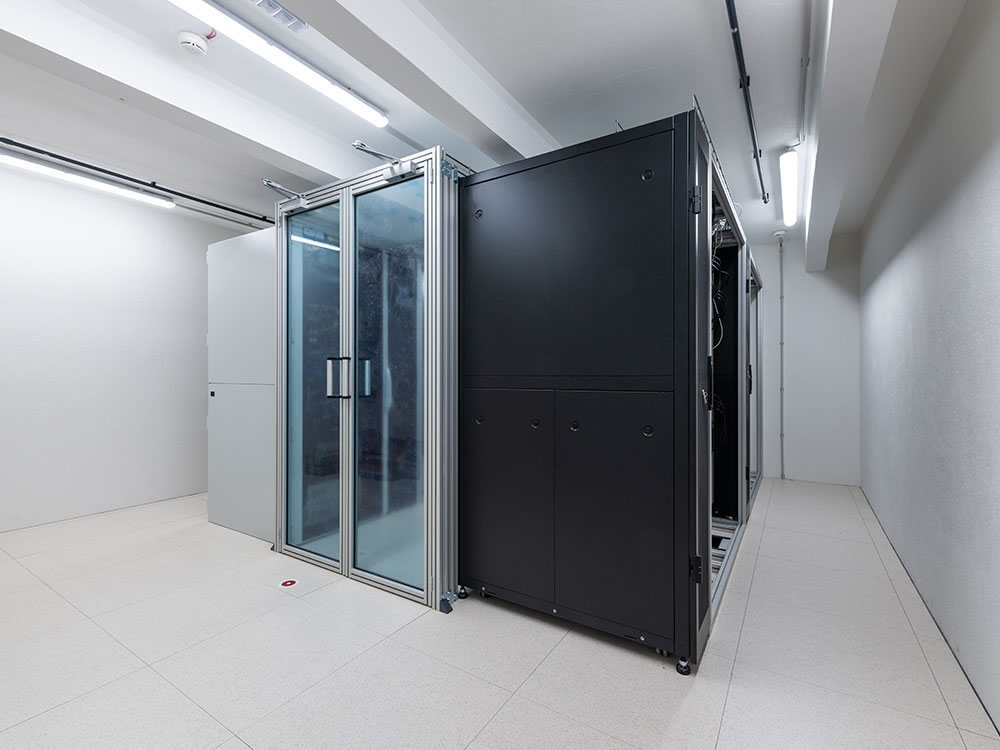In today’s high-performance data centres and critical facilities, maintaining an optimal environment is essential for ensuring operational efficiency and equipment longevity. One of the most effective strategies for managing airflow and cooling performance is cold aisle containment, a system designed to separate cold and hot air streams for maximum cooling efficiency.
Alongside this, particle count testing plays a vital role in maintaining air quality, ensuring that the environment remains clean, compliant, and free from harmful particulates that can compromise sensitive equipment. This guide provides a step-by-step approach to implementing cold aisle containment and conducting effective particle testing for enhanced performance and safety.
Understanding Cold Aisle Containment
Cold aisle containment is an energy-efficient solution designed to optimise airflow in data centres. It works by enclosing the cold aisles where cool air is supplied to prevent it from mixing with the hot air expelled by the servers.
By isolating the cold air, containment systems ensure that servers receive consistent, cool airflow, improving cooling efficiency and reducing energy consumption. This approach not only enhances temperature control but also protects critical IT infrastructure from overheating, ultimately extending the lifespan of servers and lowering operational costs.
What Is a Particle Count Test?
A particle count test is a scientific method used to measure the concentration of airborne particles within a controlled environment, such as a cleanroom or data centre. The test identifies contaminants like dust, debris, and microbial particles that may interfere with sensitive electronic equipment.
Through precise measurement of particle sizes and quantities, facility managers can assess the cleanliness level of their environments and ensure compliance with standards such as ISO 14644 for cleanrooms and ASHRAE guidelines for data centres. Regular particle testing helps detect potential contamination sources early, allowing for timely corrective action before issues escalate.
Benefits of Cold Aisle Containment with Particle Monitoring
Enhanced Cooling Efficiency and Reduced Costs
Cold aisle containment minimises the mixing of hot and cold air, allowing cooling systems to work more effectively. This leads to significant reductions in energy usage and operational costs while maintaining optimal temperature consistency across the facility.
Protection of Sensitive Equipment
By controlling airflow and preventing contamination, containment systems safeguard servers, switches, and storage devices from overheating and dust accumulation, two of the leading causes of hardware failure in data centres.
Early Detection of Contamination or Airflow Issues
Regular particle count testing helps identify deviations in air cleanliness or airflow patterns. Early detection of particle spikes enables proactive maintenance, reducing the risk of equipment malfunction or downtime.
Compliance with Industry Standards
Combining containment systems with routine particle testing ensures compliance with international environmental standards. This not only helps pass regulatory audits but also builds trust with clients who rely on your facility’s uptime and reliability.
Step-by-Step Guide to Implementation
1. Planning and Assessment
Start by evaluating your data centre’s current airflow dynamics, layout, and cooling capacity. Identify hot and cold aisle arrangements, server rack configurations, and areas prone to thermal inefficiency or contamination. This assessment provides the foundation for designing an effective containment system tailored to your facility.
2. Installing Cold Aisle Containment
Choose the right containment type based on your facility’s needs: hard wall, soft wall, or modular systems.
- Hard wall systems offer maximum isolation and durability.
- Soft wall systems provide flexibility and cost-effectiveness.
- Modular designs allow easy reconfiguration for evolving infrastructure.
Installation should ensure airtight sealing between cold and hot zones while maintaining accessibility for maintenance and upgrades.
3. Conducting Particle Count Tests
Set up test locations within and around the containment zone. Use calibrated particle counters to measure particle concentration at various airflow points. Sampling should be performed during both operational and idle periods to capture an accurate cleanliness profile. Determine the frequency of testing based on your facility’s risk assessment: monthly, quarterly, or as required by compliance standards.
4. Data Analysis and Reporting
Once particle data is collected, interpret the results to identify contamination sources or anomalies in airflow. Compare the readings against baseline standards and classify them according to ISO particle count levels. Reporting these results ensures transparency, accountability, and actionable insights for maintenance planning.
5. Maintenance and Continuous Monitoring
Maintaining optimal performance requires regular inspections of the containment system and filtration units. Replace filters as recommended, check for air leaks, and recalibrate particle counters periodically. Continuous monitoring ensures that environmental conditions remain within acceptable limits, protecting both infrastructure and data integrity.
Best Practices for Facility Managers
Establish Regular Testing Schedules
Implement a structured testing calendar that aligns with your facility’s operational cycles. Consistent testing helps identify emerging issues early and keeps your facility compliant with internal and external quality requirements.
Use Certified Equipment and Trained Personnel
Only certified particle counters and professional technicians should be employed to ensure reliable results. Trained personnel are better equipped to handle sensitive instruments and interpret test data accurately.
Integrate Environmental Controls
Combine cold aisle containment with complementary controls like humidity regulation, temperature management, and proper airflow balancing. This integrated approach maximises efficiency and minimises contamination risk across the entire facility.
Keeping Data Centres Efficient, Clean, and Compliant
Cold aisle containment and particle count testing are essential components of a comprehensive data centre maintenance strategy. While containment improves cooling performance and energy efficiency, particle testing ensures that air quality remains within safe, compliant limits.
By adopting a structured, step-by-step approach, facility managers can achieve long-term reliability, minimise downtime, and protect valuable IT assets. Investing in proper containment and monitoring systems is not just about efficiency; it’s about building a cleaner, safer, and more resilient data centre environment.


